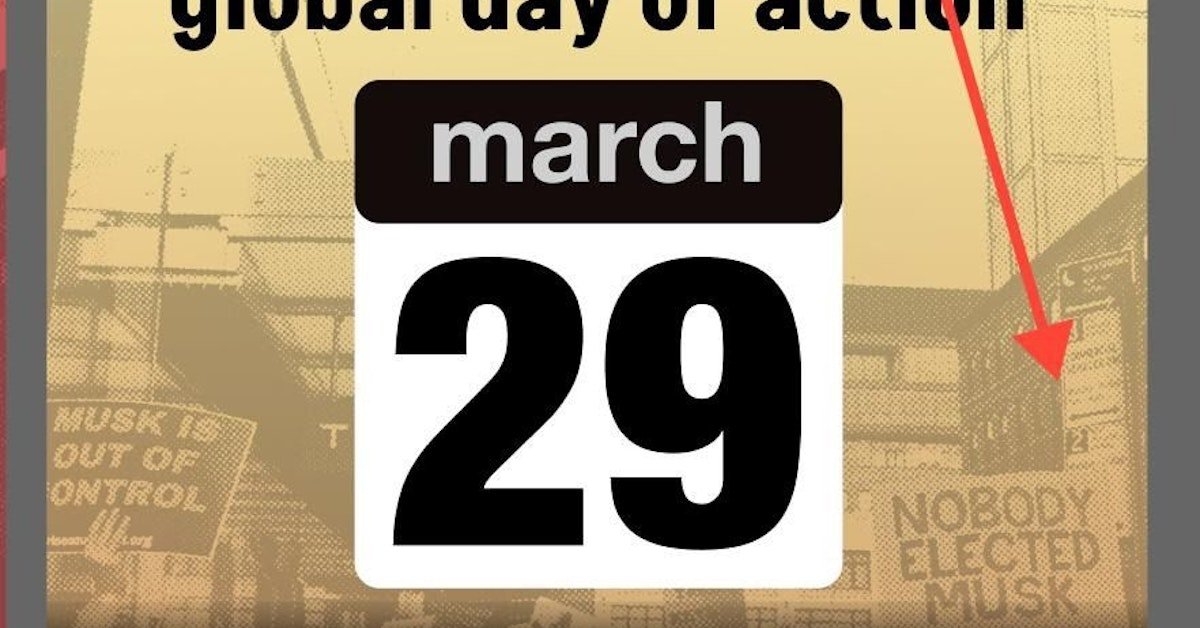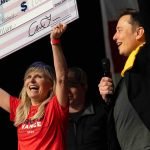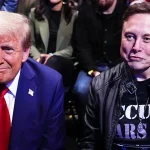
Understanding the Implications of Tesla Takedown Day: A Global Protest in Focus
Tesla Takedown Day: Global Protests Target Elon Musk’s Leadership – Miami City Report
Explore the upcoming Tesla Takedown Day, a global protest against Elon Musk’s influence and Tesla’s corporate practices. This blog post delves into the motivations, expected impact, and personal stories surrounding this event.
As a longtime admirer of innovative technology, I found myself in a peculiar dilemma upon hearing about Tesla Takedown Day. This global protest scheduled for March 29 against Elon Musk’s leadership has sparked heated debates about corporate responsibility and personal ethics. What does it mean for a brand like Tesla, known for pushing the boundaries of sustainable transportation, to face backlash from its devoted consumer base?
The Spark Behind Tesla Takedown Day
On March 29, a significant event is set to unfold. The Tesla Takedown Day is planned as a global protest against Elon Musk. But what sparked this movement? How did we get here? Let’s dive into the origins of this protest and the issues fueling public anger against Musk.
Overview of the Protest’s Origins
The roots of the Tesla Takedown Day can be traced back to a growing discontent with Musk’s leadership. Many people feel that his actions and decisions have strayed far from the values that Tesla once represented. This protest isn’t just about one man; it’s about the direction of a company that many once held in high regard.
Initially, the protests began as small gatherings. Activists and concerned citizens started voicing their frustrations. They were worried about Tesla’s environmental impact, labor practices, and Musk’s controversial statements. As these concerns spread, the movement gained momentum. Social media played a crucial role in amplifying these voices. It allowed individuals to connect and organize on a global scale.
Key Issues Fueling Public Anger Against Elon Musk
Several key issues have fueled the public’s anger against Musk:
- Environmental Concerns: Tesla was once seen as a champion for sustainability. However, recent reports have raised questions about the environmental impact of lithium mining for batteries.
- Labor Practices: There have been numerous allegations regarding poor working conditions at Tesla factories. Workers have reported long hours and inadequate safety measures.
- Controversial Statements: Musk’s tweets and public comments have often sparked outrage. His remarks on topics like COVID-19 and labor rights have drawn criticism from various groups.
These issues have created a perfect storm of discontent. People are no longer willing to overlook Musk’s actions. They want accountability. As one expert put it,
“Every brand must be accountable for its impact on society and the environment.”
The Role of Social Media in Rallying Support
Social media has been a game-changer for grassroots activism. Platforms like Twitter, Facebook, and Instagram have allowed individuals to share their stories and concerns widely. The Tesla Takedown Day organizers have effectively utilized these platforms to spread their message.
Hashtags like #TeslaTakedownDay have gained traction, helping to unite people across the globe. This digital rallying cry has made it easier for individuals to join the movement, regardless of their location. With demonstrations expected at around 500 Tesla showrooms worldwide, including all 277 U.S. locations and Tesla Supercharger stations, the impact of social media cannot be overstated.
Timeline Leading to the Protests
Understanding the timeline leading to these protests is crucial. It paints a clearer picture of how public sentiment has evolved:
- Initial Concerns: Reports about Tesla’s environmental practices began surfacing in early 2022.
- Labor Allegations: By mid-2022, workers started speaking out about their experiences at Tesla factories.
- Public Outcry: As Musk continued to make controversial statements, public frustration grew.
- Organizing Protests: In early 2023, activists began planning the Tesla Takedown Day, aiming for a global demonstration.
This timeline illustrates a gradual build-up of frustration. It shows how a series of events led to a collective response. People are tired of feeling unheard. They want change.
Discussion on Public Perception of Musk and Tesla’s Brand Values
The public perception of Elon Musk and Tesla has shifted dramatically. Once hailed as a visionary, Musk is now viewed by many as a polarizing figure. Tesla’s brand values, which once centered on innovation and sustainability, are now under scrutiny. People are questioning whether the company still embodies these ideals.
As we approach the Tesla Takedown Day, it’s clear that this protest is more than just a reaction to Musk’s actions. It’s a call for accountability and a demand for a return to the values that made Tesla a leader in the electric vehicle market.
In the end, the Tesla Takedown Day is a reflection of a larger societal shift. People are becoming more aware of the impact that corporations have on the world. They are demanding that brands take responsibility for their actions. And as we prepare for this global protest, it’s essential to remember that every voice matters in this fight for accountability.
Impact on Brand Reputation and Consumer Behavior
Protests can be a powerful force. They shape public perception in ways that companies often underestimate. When consumers take to the streets, or even to social media, they send a clear message: they care. They care about values, ethics, and how brands align with their beliefs. But how does this really impact a brand’s reputation? Let’s dive into this phenomenon.
How Protests Can Shape Public Perception
Protests can turn a brand’s image upside down. They highlight issues that may have been ignored or overlooked. For instance, the recent protests against Tesla are a prime example. Organizers have emphasized demonstrations at Tesla’s global showrooms and Supercharger stations as a critical act of consumer dissent. With around 500 locations targeted worldwide, including all 277 U.S. locations, the message is loud and clear.
But why do protests matter? Here are a few reasons:
- Visibility: Protests grab attention. They make headlines and dominate social media feeds.
- Consumer Sentiment: They can shift public sentiment almost overnight. A brand that was once beloved can quickly become a target.
- Accountability: They hold companies accountable for their actions. Consumers demand change, and brands must respond.
As a brand, you can’t afford to ignore the impact of protests. They can lead to a loss of trust, which is hard to regain. As a brand expert once said,
“Brands rise and fall based on public sentiment; it’s a marketplace of trust.”
Case Studies of Other Companies Facing Similar Backlash
Let’s look at some case studies. Companies like Nike and Starbucks have faced their share of backlash. Nike, for instance, faced protests when it featured Colin Kaepernick in its advertising. Many people were outraged, burning their Nike gear in protest. But what happened next? Nike’s sales soared. They turned a moment of dissent into a powerful marketing strategy.
Starbucks also faced backlash when it was accused of being unwelcoming to certain groups. The company responded by closing stores for a day to conduct racial bias training. This proactive approach helped them regain consumer trust.
These examples show that while protests can be damaging, they can also provide an opportunity for brands to engage with their consumers. It’s about how you respond. Do you listen and adapt, or do you dig in your heels?
The Power of Consumer Activism in the Digital Age
In today’s digital age, consumer activism has taken on a new life. Social media amplifies voices. A single tweet can spark a global movement. This is something brands need to understand. The digital landscape allows consumers to organize quickly and effectively. They can mobilize protests, share information, and rally support in a matter of hours.
Statistics show that a significant number of consumers are willing to change their buying habits based on a brand’s stance on social issues. For example, a recent survey indicated that over 70% of consumers are more likely to support brands that take a stand on social justice issues. This is a clear indication of the power of consumer activism.
Moreover, the estimated number of protestors involved globally during significant events can reach into the millions. This is not just a few voices; it’s a chorus demanding change. Brands must recognize this shift in consumer behavior. Ignoring it could be detrimental.
In conclusion, the impact of protests on brand reputation is profound. They can reshape public perception, as seen in the cases of Nike and Starbucks. The digital age has empowered consumers like never before. Brands must adapt to this new reality. They need to engage with their audience and be willing to listen. After all, in this marketplace of trust, the stakes have never been higher.
What This Means for the Future of Sustainable Brands
The recent protests against Tesla have sparked a conversation that goes beyond just one company. It raises questions about the relationship between activism and innovation. As we look at the future of sustainable brands, we must consider how these events might shape corporate strategies and consumer expectations.
The Relationship Between Activism and Innovation
Activism can be a powerful force for change. It challenges companies to rethink their practices and align more closely with consumer values. When activists raise their voices, they often shine a light on issues that may have been overlooked. This can lead to innovation. Why? Because companies are pushed to adapt and improve.
Take Tesla, for example. The protests scheduled for March 29, known as Tesla Takedown Day, are not just about one individual or one company. They represent a broader demand for accountability and ethical practices in the tech industry. As the protests unfold, we might see Tesla responding with new strategies or innovations. After all, as an industry thought leader once said,
“Innovation is often birthed from challenges, including public scrutiny.”
Potential Shifts in Tesla’s Corporate Strategy Post-Protests
What happens next for Tesla? The protests could lead to significant shifts in its corporate strategy. Speculation is already swirling about potential changes in leadership or corporate philosophy. Will Elon Musk adjust his approach in response to public sentiment? Or will he double down on his current strategies?
One thing is clear: the electric vehicle (EV) market is evolving rapidly. The protests may influence consumer perceptions and, in turn, affect projected growth rates for EVs. Before the protests, growth rates were optimistic. However, post-protest sentiment could shift those projections. Companies that ignore this reality might find themselves left behind.
How Other Brands Can Learn from Tesla’s Experience
Other brands should take note of Tesla’s situation. The protests highlight the intersection of technology, ethics, and consumer expectations. Companies must be proactive in addressing these issues. Ignoring them could lead to backlash, as we’re seeing with Tesla.
Here are a few lessons that can be drawn from Tesla’s experience:
- Engage with your audience: Brands should actively listen to their consumers. Understanding their values can help companies align their practices accordingly.
- Be transparent: Openness about corporate practices fosters trust. If consumers feel informed, they are more likely to support a brand.
- Adapt to change: The market is always evolving. Brands must be willing to innovate and change their strategies in response to public sentiment.
As we reflect on these points, it’s essential to recognize that sustainable brands are not just about eco-friendly products. They are about building a relationship with consumers based on trust and shared values. The protests against Tesla serve as a reminder that brands must be accountable for their actions.
In conclusion, the future of sustainable brands hinges on their ability to navigate the complex landscape of activism and innovation. Tesla’s experience offers valuable insights for all companies aiming to thrive in this environment. As we move forward, let’s keep the conversation going. How can we, as consumers and brands, work together to foster a more sustainable future? The answer lies in our willingness to engage, innovate, and adapt.
TL;DR: Tesla Takedown Day, set for March 29, will see protests at 500 locations worldwide against Elon Musk due to his connections with controversial political figures and concerns about corporate governance.
TSLA, TakedownDay, BrandReputation, TeslaProtest, ConsumerActivism, TeslaShowrooms, GlobalProtestsAgainstTesla, ElonMuskBacklash, GovernmentEfficiency, SustainableTransportation
TSLA, #GlobalProtestsAgainstTesla, #ElonMuskBacklash, #TeslaProtest, #GovernmentEfficiency, #TeslaShowrooms, #SustainableTransportation, #TakedownDay, #ConsumerActivism, #BrandReputationTesla, Elon Musk, Tesla Takedown Day, global protest, March 29, consumer activism, brand accountability, labor practices, EV market, corporate ethics, sustainability, tech industry protests, Tesla showrooms, Musk controversy, social media protest

